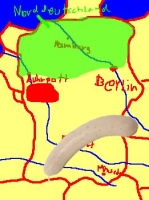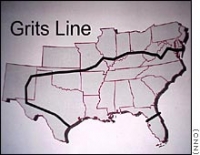I’m just going through old books and find a translation of the Law of Persons, Article 1-89bis of the Swiss Civil Code, by the Swiss-American Chamber of Commerce, by a team of seven translators, copyright 2006, which I bought for much bucks in the days before the Swiss government had an English version online (PDF).
Here’s the beginning without much comment, out of interest:
Art. 1 A. Anwendung des Rechts
A. Anwendung des Rechts
1 Das Gesetz findet auf alle Rechtsfragen Anwendung, für die es nach Wortlaut oder Auslegung eine Bestimmung enthält.
2 Kann dem Gesetz keine Vorschrift entnommen werden, so soll das Gericht1nach Gewohnheitsrecht und, wo auch ein solches fehlt, nach der Regel entscheiden, die es als Gesetzgeber aufstellen würde.
3 Es folgt dabei bewährter Lehre und Überlieferung.
1 Ausdruck gemäss Ziff. I 1 des BG vom 26. Juni 1998, in Kraft seit 1. Jan. 2000 (AS 19991118; BBl 1996 I 1). Diese Änd. ist im ganzen Erlass berücksichtigt.
Art. 2 B. Inhalt der Rechtsverhältnisse / I. Handeln nach Treu und Glauben
B. Inhalt der Rechtsverhältnisse
I. Handeln nach Treu und Glauben
1 Jedermann hat in der Ausübung seiner Rechte und in der Erfüllung seiner Pflichten nach Treu und Glauben zu handeln.
2 Der offenbare Missbrauch eines Rechtes findet keinen Rechtsschutz.
Swiss-American Chamber of Commerce version
Art. 1
Application of the law
The law shall apply to all legal questions that are covered, according to wording or interpretation, by one of the provisions thereof.
In the absence of a provision of law, the judge shall decide according to customary law and, in the absence of such customary law, according to the rule he would establish as a legislator.
In this regard, he shall follow established doctrine and tradition.
Art. 2
Content of legal relationships – Acting in good faith. Good faith
Each person shall be required to exercise his rights and fulfill his duties in good faith.
The manifest abuse of a right shall not be protected by law.
Online version at admin.ch
Art. 1
Application of the law
1 The law applies according to its wording or interpretation to all legal questions for which it contains a provision.
2 In the absence of a provision, the court shall decide in accordance with customary law and, in the absence of customary law, in accordance with the rule that it would make as legislator.
3 In doing so, the court shall follow established doctrine and case law.
Art. 2
Scope and limits of legal relationships – Acting in good faith
1 Every person must act in good faith in the exercise of his or her rights and in the performance of his or her obligations.
2 The manifest abuse of a right is not protected by law.
The comparison is quite interesting. Both versions are acceptable but one might translate differently in some places.
I prefer ‘in accordance with’ to ‘according to’ (which is a trivial matter), but why does the online version translate Überlieferung as ‘case law’? The court (rather than judge) as legislator – for Gesetzgeber I tend to write legislature.
I prefer ‘to perform his duties’ to ‘fulfil’ (‘fulfill’ is the US spelling) and ‘obligations’. ‘hat…nach Treu und Glauben zu handeln’ – one version has ‘must act’ and the other has ‘shall be required to…’.I would have thought ‘shall’ would be OK here – sometimes it is too strong for ‘hat…zu’.


